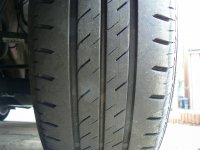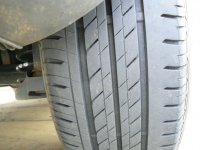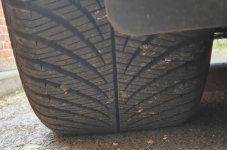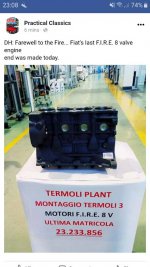Autonomous emergency braking (City braking) is getting better with each incarnation. There will however be hiccups. Not being able to drive over some foliage should not happen, unlees going too quickly.
The systems generally will not operate below a slow speed, otherwise they will prevent you parking into your garage, or tight against your fence. If however you approach said fence too quickly, like a nervous passenger it will panic.
There is also a maximum speed in its operating range, dependent in part on its radar measuring distance. Over this speed it may warn, or just let you hit stuff. It is still the driver's responsibility to look where they're going, although from observation out on the road, this point seems to be missed by many.
Most systems will also not respond if the closing speed is greater than the vehicle's speed. Whilst this may sound scary, if someone is heading towards you on your side of the road, there is a practical reason. Not all roads are straight. Heading towards a left-right bend, you are likely to be heading directly at oncoming vehicles, what you really do not need is the car to stop, as you will likely get hit from behind, and pushed into the oncoming car instead of just passing each other at the bend.
If someone is dancing around in front of the car, and is in that, moving towards the sensor, the closing speed will be greater than the car's speed, so will happily run the clown over.
If your car has this feature, to test it you need two friends and an old sheet, or some means of holding the sheet ahead of you, like a banner.
The friends hold the sheet across your path, with a light grip so that they can let go without injury. Drive towards the sheet within the speed range of the system (read the handbook). Just keep driving, and the car will, very late, heave on the brakes. It is incredibly violent, and in a manual, the car will of course stall.
Even better, do this in someone else's car.
The systems generally will not operate below a slow speed, otherwise they will prevent you parking into your garage, or tight against your fence. If however you approach said fence too quickly, like a nervous passenger it will panic.
There is also a maximum speed in its operating range, dependent in part on its radar measuring distance. Over this speed it may warn, or just let you hit stuff. It is still the driver's responsibility to look where they're going, although from observation out on the road, this point seems to be missed by many.
Most systems will also not respond if the closing speed is greater than the vehicle's speed. Whilst this may sound scary, if someone is heading towards you on your side of the road, there is a practical reason. Not all roads are straight. Heading towards a left-right bend, you are likely to be heading directly at oncoming vehicles, what you really do not need is the car to stop, as you will likely get hit from behind, and pushed into the oncoming car instead of just passing each other at the bend.
If someone is dancing around in front of the car, and is in that, moving towards the sensor, the closing speed will be greater than the car's speed, so will happily run the clown over.
If your car has this feature, to test it you need two friends and an old sheet, or some means of holding the sheet ahead of you, like a banner.
The friends hold the sheet across your path, with a light grip so that they can let go without injury. Drive towards the sheet within the speed range of the system (read the handbook). Just keep driving, and the car will, very late, heave on the brakes. It is incredibly violent, and in a manual, the car will of course stall.
Even better, do this in someone else's car.





